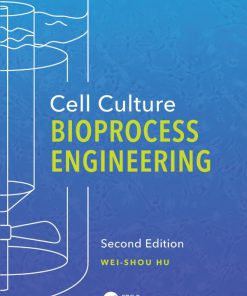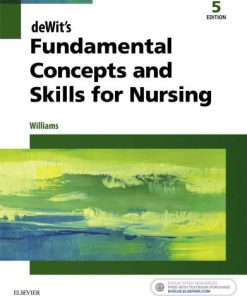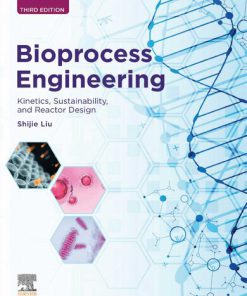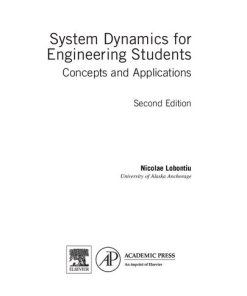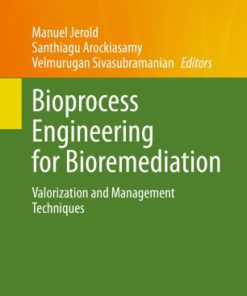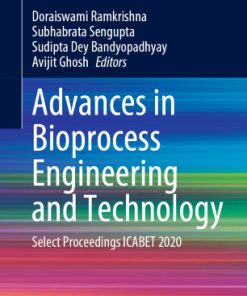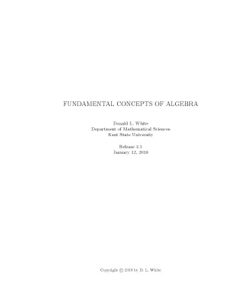Chemical and Bioprocess Engineering Fundamental Concepts for First Year Students 1st edition by Ricardo Simpson, Sudhir Sastry 1493944924 9781493944927
$50.00 Original price was: $50.00.$25.00Current price is: $25.00.
Chemical and Bioprocess Engineering Fundamental Concepts for First Year Students 1st edition by Ricardo Simpson, Sudhir K. Sastry – Ebook PDF Instant Download/DeliveryISBN: 1493944924, 9781493944927
Full download Chemical and Bioprocess Engineering Fundamental Concepts for First Year Students 1st edition after payment.

Product details:
ISBN-10 : 1493944924
ISBN-13 : 9781493944927
Author: Ricardo Simpson, Sudhir K. Sastry
The goal of this textbook is to provide first-year engineering students with a firm grounding in the fundamentals of chemical and bioprocess engineering. However, instead of being a general overview of the two topics, Fundamentals of Chemical and Bioprocess Engineering will identify and focus on specific areas in which attaining a solid competency is desired. This strategy is the direct result of studies showing that broad-based courses at the freshman level often leave students grappling with a lot of material, which results in a low rate of retention. Specifically, strong emphasis will be placed on the topic of material balances, with the intent that students exiting a course based upon this textbook will be significantly higher on Bloom’s Taxonomy (knowledge, comprehension, application, analysis and synthesis, evaluation, creation) relating to material balances. In addition, this book also provides students with a highly developed ability to analyze problems from the material balances perspective, which leaves them with important skills for the future. The textbook consists of numerous exercises and their solutions. Problems are classified by their level of difficulty. Each chapter has references and selected web pages to vividly illustrate each example. In addition, to engage students and increase their comprehension and rate of retention, many examples involve real-world situations.
Chemical and Bioprocess Engineering Fundamental Concepts for First Year Students 1st Table of contents:
Chapter 1: Introduction
1.1 What Is an Engineer?
1.2 Is Engineering for Me?
1.3 What Are Process, Chemical, Bioprocess, and Biochemical Engineers?
1.4 History
1.4.1 Why Is History Important?
1.4.2 Were We Born Engineers?
1.4.3 Industrial Revolution
1.4.4 A Brief History of Chemical and Biochemical Engineering
1.4.4.1 Chemical Engineering
1.4.4.2 Biochemical Engineering
1.5 Why Integrate Chemical and Bioprocess Engineering Fundamentals in One Book?
1.6 Chemical and Bioprocess Engineering in the Twenty-First Century
1.6.1 Required Basic Knowledge: Basic Tools of Mathematics, Chemistry, Physics, and Biology
1.7 Cognitive Domain: What Will We Comprehend and Learn?
References
Additional Web References
Chapter 2: Fundamentals of Magnitudes, Unit Systems, and Their Applications in Process Engineering
2.1 Chapter Purpose and Scope
2.2 Introduction
2.2.1 Brief History
2.2.2 Metric and SI Systems
2.2.3 Basic Units (Table2.1)
2.2.4 Derived Units
2.3 Equivalence Among Different Systems, Conversion Factor gc, and Prefixes
2.3.1 Equivalence Among Different Systems
2.3.2 Conversion Factor gc
2.3.3 Multiples and Submultiples in SI System
2.4 Basic Concepts and Process Variables
2.4.1 Mass, Volume, Density (rho), and Specific Volume (1/rho)
2.4.2 Moles
2.4.3 Pressure (P)
2.4.4 Temperature (T)
2.5 Dimensionless (Nondimensional) Numbers and Their Importance in Process Engineering
2.5.1 Why Are Dimensionless Numbers Important?
2.5.2 Dimensionless Numbers
2.5.2.1 Reynolds Number (Re)
2.5.2.2 Nusselt Number (Nu)
2.5.2.3 Sherwood Number (Sh)
2.5.2.4 Prandtl Number (Pr)
2.5.2.5 Froude Number (Fr)
2.6 Solved Problems
2.7 Proposed Problems
2.7.1 Warm-Up
2.7.2 Conversions and Calculations
2.7.3 Equivalences and Conversions on Planet Morc
2.7.4 Engineering Problems
References
Additional Web References
Chapter 3: Fundamentals of Process Control, Communication, and Instrumentation
3.1 Introduction
3.2 Understanding What Process Control Is
3.2.1 Objective of Control
3.2.2 Meter
3.2.3 The Process to Be Controlled
3.2.4 Manipulated Resource
3.2.5 Action of Control
3.2.6 Control Loop
3.3 Instrumentation
3.3.1 Sensors
3.3.1.1 Accuracy and Precision
3.3.1.2 Biosensors
3.3.2 Actuators
3.3.3 Controllers
3.4 Process Diagrams, PFDs, and PandID
3.4.1 PFD
3.4.2 PandID
3.5 Proposed Questions
References
Additional Web References
Norms
Chapter 4: Learning from Nature and Its Potential Applications in Chemical and Bioprocess Engineerin
4.1 Introduction
4.2 Lessons and Challenges from Nature
4.3 Biomimetics and Product Development
4.4 Project Homework
4.4.1 Potential Topics
4.5 Corollary
References
Selected References (Project Homeworks)
Additional Web References
Chapter 5: Challenging Students and Solving Problems with Basic Tools, Testing Students´ Attitudes
5.1 Introduction
5.2 Strategy and Method for Solving Problems
5.3 Solved Problems
5.3.1 Rate
5.3.2 Concentrations
5.3.3 Percentages
5.3.4 Ages
5.3.5 Miscellaneous
5.4 Proposed Problems
Additional Web References
Chapter 6: A Glimpse of Thermodynamics and Transport Phenomena
6.1 Introduction
6.2 A Glimpse at Thermodynamics
6.2.1 Introduction, Definitions, and Key Concepts
6.2.2 Ideal Gases
6.2.3 Material and Energy Balance in Open Systems Under Steady-State Conditions
6.2.4 Entropy (S)
6.3 A Glimpse of Transport Phenomena
6.3.1 Heat Transfer
6.3.2 Mass Transfer
6.4 Conceptual and Quantitative Questions
6.4.1 Solved Problems (Ideal Gases)
6.5 Proposed Problems (Ideal Gases)
Additional Web References
Ideal Gases
Chapter 7: Fundamentals of Material Balance (Nonreactive Systems)
7.1 Chapter Purpose and Strategy
7.2 What Is a process?
7.3 What Is Material Balance?
7.4 General Concepts on Material Balance
7.5 Why Material Balance Is Relevant for Chemical and Bioprocess Engineers
7.6 Formulating Material Balance Equations (Steady-State and Continuous Operation)
7.7 Material Balance Basics
7.8 Designing and Structuring a General Procedure to Formulate and Solve Material Balance Problems
7.8.1 Developing a General Procedure for Material Balance Problems
7.8.2 Understanding the Procedure to Approach, Formulate, and Solve Material Balance Problems
7.8.2.1 Procedure Description and Analysis
7.8.3 Solving Material Balance Problems with the Proposed Procedure
7.9 Solved Problems
7.10 Proposed Problems
References
Additional Web References
Chapter 8: Fundamentals of Material Balance (Reactive Systems)
8.1 Chapter Purpose and Strategy
8.2 Why Reactive Systems Are Relevant to Material Balance
8.2.1 Chemical Process
8.2.2 Bioprocess
8.3 Particularities of Material Balance on Reactive Systems
8.3.1 Material Balance Equations for Reactive Systems (Steady-State and Continuous Operation)
8.3.2 Stoichiometry
8.3.3 Limiting and Excess Reagents and Reaction Conversion
8.4 Material Balance in Reactors and Bioreactors
8.4.1 Typical Material Balance Problems in Chemical Processes
8.4.2 Typical Material Balance Problems in Bioprocesses
8.5 Formulating and Solving Material Balance Equations in Reactive Systems (Steady-State and Continu
8.6 Solved Problems
8.7 Proposed Problems
Additional Web References
Chapter 9: Fundamentals of Mathematical Modeling, Simulation, and Process Control
9.1 Chapter Purpose
9.2 What Is Mathematical Modeling?
9.3 Importance of Building Mathematical Models and Constructing Simple Models for Chemical and Biopr
9.3.1 What Have We learned?
9.3.2 Building Simple Mathematical Models
9.4 The Importance of Simulations in Chemical and Bioprocess Engineering
9.5 Why Do Automatic Process Control?
9.5.1 Management of Disturbances
9.5.2 Maintaining Optimum Operating Conditions
9.5.3 Decreased Variability in Bottlenecks
9.6 Control Strategies
9.6.1 PID Controller
9.6.2 On/Off Controllers
9.7 Multivariable and Supervisory Control
9.7.1 Multivariable Control
9.7.2 Supervisory Control
9.8 Proposed Questions
References
Additional Web References
Chapter 10: Scale-Up in Chemical and Bioprocess Engineering
10.1 Introduction
10.2 Understanding Size Change
10.3 Principle of Similarity
10.4 A Glimpse of Dimensional Analysis
10.5 Understanding Scale-Up (-Down) in Chemical and Bioprocess Engineering
10.6 Scale-Up in Nature
10.7 Project Homework
10.7.1 Potential Topics
References
Additional Web References
Chapter 11: Optimization and Chemical/Bioprocess Optimization
11.1 Chapter Purpose
11.2 What Is Optimization?
11.3 Do We Have the Required Knowledge to Deal with Problems of Optimization and Process Optimizatio
11.4 Understanding Optimization in Chemical and Bioprocess Engineering
11.5 Maximum, Minimum, and a Warm-Up Example
11.5.1 Warm-Up Example: Minimization
11.6 Origins of Operations Research and Process Optimization
11.6.1 Historical Background
11.6.2 Operations Research and the Scientific Method
11.6.3 Linear Programming
11.6.4 Modeling and Solving LP and IP Problems
11.6.5 Warm-Up Example
11.7 Solved Problems
11.7.1 Maximum, Minimum, and Applications
11.7.2 Operations Research Problems
11.8 Proposed Problems
11.8.1 Maximum, Minimum, and Applications
11.8.2 Operation Research Problems
References
Additional Web References
Chapter 12: Basic Economic Principles and Deciding Among Alternatives
12.1 Chapter Purpose
12.2 Understanding What Economics Is
12.3 What You Will Be Learning
12.4 What Is the Interest Rate? Some Simple Calculations
12.5 Financial Mathematical Equivalences
12.6 Net Present Value (NPV) and Annual Equivalent Benefits/Cost (AEB or AEC)
12.6.1 Net Present Value
12.6.2 Annual Equivalent Benefits/Cost
12.7 Comparing and Deciding Among Different Alternatives: Warm-Up Example
12.8 Solved Problems
12.8.1 Real-Life Problems
12.8.2 Engineering Problems
12.9 Proposed Problems
12.9.1 Real-Life Problems
12.9.2 Personal Finance
12.9.3 Engineering Problems
People also search for Chemical and Bioprocess Engineering Fundamental Concepts for First Year Students 1st:
what is chemical and biological engineering
chemical engineering bioprocess jobs
what is chemical and biomolecular engineering
basic concepts of chemical engineering
what is bioprocess engineering
Tags: Chemical, Bioprocess, Engineering, Fundamental Concepts, Ricardo Simpson, Sudhir Sastry
You may also like…
Biology and other natural sciences - Biotechnology
Bioprocess Engineering: Kinetics, Sustainability, and Reactor Design 3rd Edition Shijie Liu
Engineering
System Dynamics for Engineering Students: Concepts and Applications 2nd Edition Nicolae Lobontiu
Politics & Philosophy - Politics
Twenty First Century Chicago Preliminary 1st edition by Dick Simpson 802543D 9798823316651
Engineering
Uncategorized




